4 steps to get LinkedIn Ads data in Freshsales
Know whether your LinkedIn ads are generating leads, opportunities and customers. In this post we'll show you how to get your LinkedIn data into Freshsales.
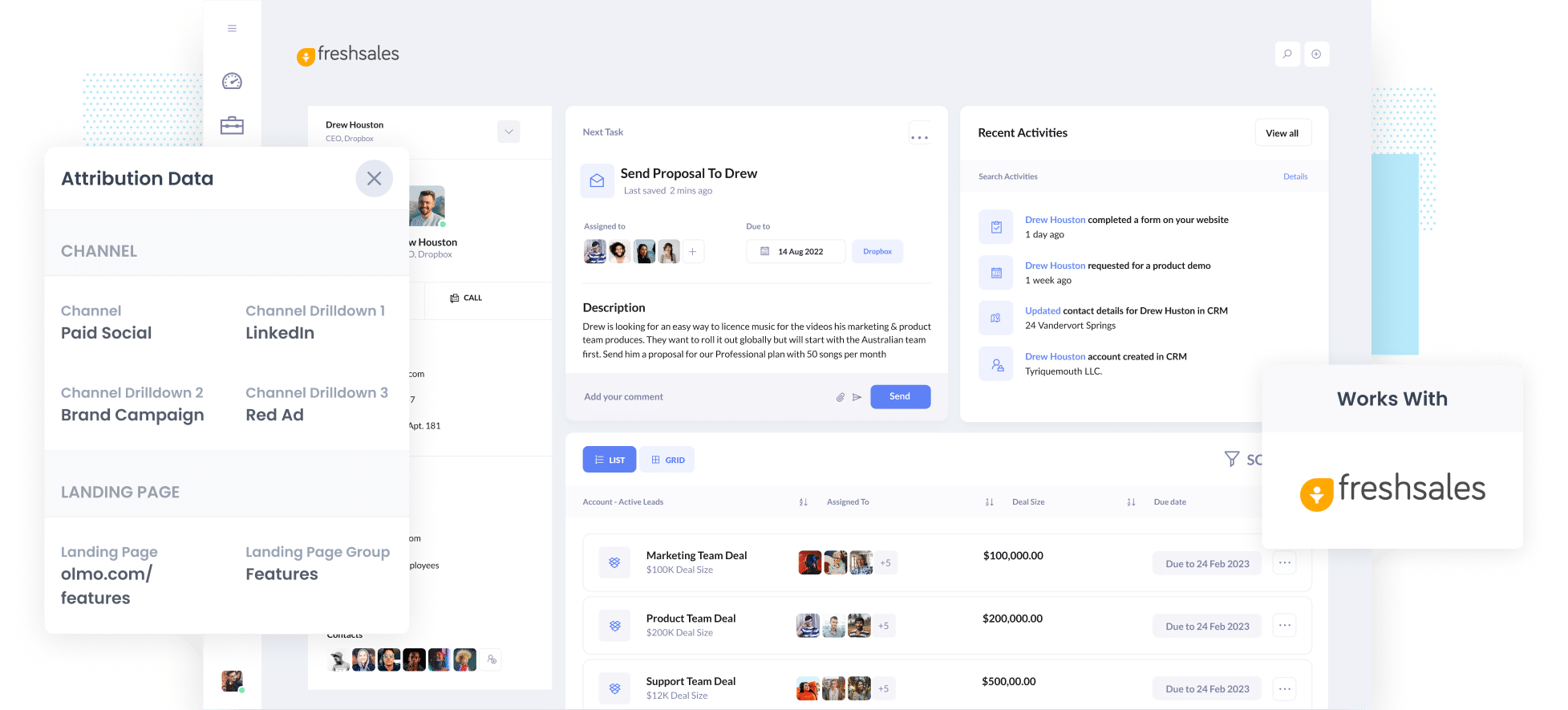
LinkedIn ads are a good mechanism for promoting b2b businesses. The LinkedIn network has deep and specific targeting options which means you can properly segment audiences by industry, job title, seniority and more.
But because of this functionality, and the vast community on the LinkedIn platform, ads can be pricey so it's important to know if they're delivering leads and customers - not just site visits or clicks.
In this post, I'll show you how to use a nifty tool called Attributer to track the leads and customers you receive from your LinkedIn Ads from right within Freshsales.
The best way to track LinkedIn Ads in Freshsales
Know how many leads and customers are generated by your LinkedIn Ads in Freshsales using these 4 steps and a tool called Attributer:
1. Install Attributer on your website

Attributer is a hard working little snippet of code that you install on your website to track where your leads and customers are being generated. It works by passing this information through to Freshsales when a visitor submits a form on your website.
Adding Attributer to your site is easy! All you have to do is include the piece of code we send you after you sign up for a free 14 day trial (instructions on how to add it can be found here).
Once you've added the code to your site, you need to add hidden fields to your forms, including:
- Channel
- Channel Drilldown 1
- Channel Drilldown 2
- Channel Drilldown 3
- Channel Drilldown 4
Attributer works with dozens of form builders (including Freshsales forms, Gravity Forms, Jotform, Typeform and more). You'll also find a step-by-step guide for adding hidden fields to dozens of form builders here.
2. Add UTM parameters to your ads
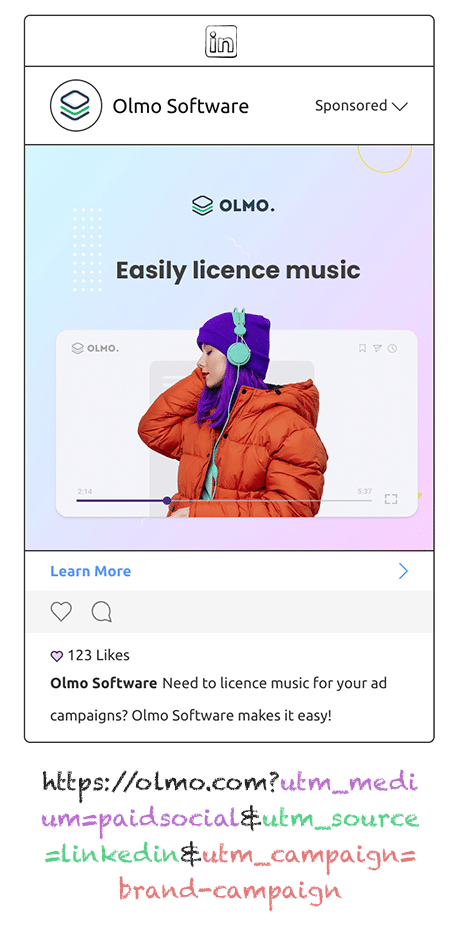
Next you need to add UTM parameters to your LinkedIn Ads.
UTM parameters are just pieces of text that you pin to the end of the URL you are sending people to from your various marketing campaigns.
If the page you are sending someone to is attributer.io/integrations/freshsales then your final URL (with UTM parameters) might look like this:
attributer.io/integrations/freshsales?utm_medium=paidsocial&utm_source=linkedin&utm_campaign=brand-campaign
UTM parameters help analytics tools like Attributer (and others) see where your leads are coming from, which campaign they interacted with, what ad they clicked, etc.
3. LinkedIn Ads data is sent into Freshsales
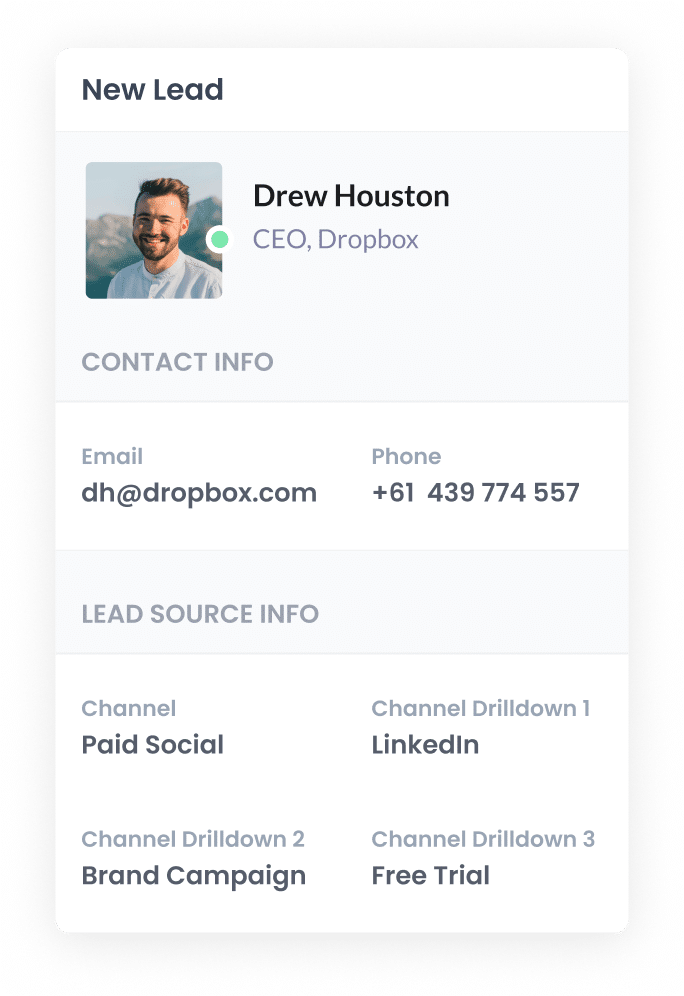
Once Attributer is running and UTM parameters are behind your ads, Attributer will look at where your website visitors are coming from (including those from your LinkedIn Ads).
Attributer then sorts each visitor into a series of channels (like Paid Social, Paid Search, Organic Search, etc) and stores the information in a cookie in the visitor's browser.
When a visitor completes one of your forms, Attributer fills the hidden fields with the information on where they came from.
That data can then be sent to Freshales along with the lead's name, email, company and any of the other information you capture in your forms.
4. Run reports to see which ads are performing
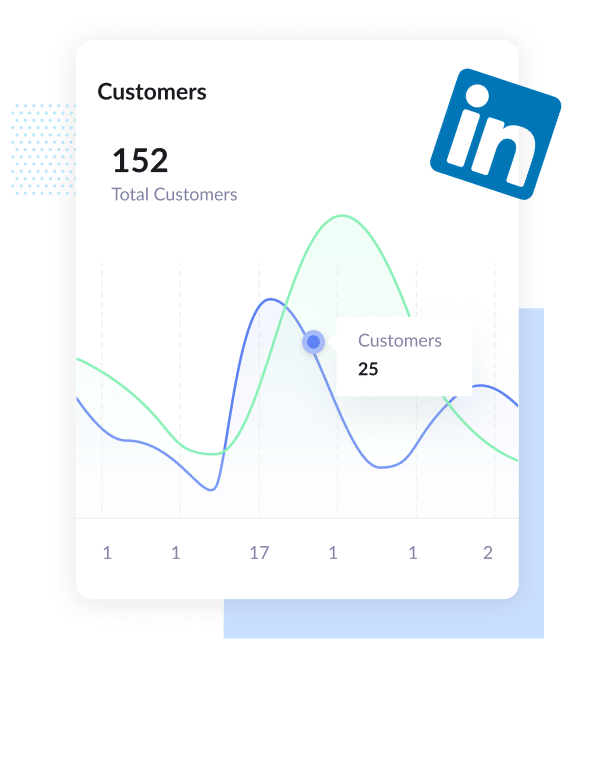
When you have LinkedIn Ads data flowing into Freshsales you can use it to run reports to see what's delivering the best ROI. You can do this using either Freshsales' native reporting tools, or use a reporting tool you have connected to Freshsales (eg: Tableau, Microsoft Power BI, Looker, etc.)
You can use this data to run reports that show the number of leads you receive from your LinkedIn Ads, which campaigns are generating the most leads, what the conversion rate from lead to opportunity is, what the close rate is, and how much revenue has been generated, etc.
What is Attributer and why use it?
Attributer is a small piece of code you add to your website. Attributer tracks where your leads and customers come from and fills the hidden fields behind your forms with the data. When a form is submitted, the marketing attribution data is captured by your form tool and sent to Freshsales.
Let's imagine for a moment you're running marketing activities for a company that builds bespoke furniture and someone clicks on one of your ads, it would pass through the following information (depending on what you put in the UTM parameters):
- Channel: Paid Social
- Channel Drilldown 1: LinkedIn
- Channel Drilldown 2: Table Campaign (or the specific campaign name)
- Channel Drilldown 3: Timber Ad (or whatever ad creative they clicked on)
Attributer is the best way to track your LinkedIn Ads in Freshsales because it:
- Captures marketing attribution information - Attributer captures information on all the leads who come to your site through other channels like Paid Search, Organic Search, Organic Social, Referral, or Direct.
- Remembers the data - Attributer stores the UTM parameters in a cookie in the user’s browser, so even if a visitor leaves your site and comes back, the UTM parameters are passed through.
- Cleans the data - Attributer knows how to handle data discrepancies in UTM usage. For example if you're using utm_source=linkedin in some campaigns and utm_source=LinkedIn in others. It knows where to assign these leads to the correct channel (Paid Social in this case) regardless of these inconsistencies.
4 reports you can run when you track LinkedIn Ads data in Freshsales
I founded Attributer after I encountered marketing attribution issues at every company I worked with over the past 15 years.
Over that time, I've spent upwards of $1 million on LinkedIn ads, plus more on other advertising networks. I've also spent countless hours running reports to see how those ads were performing.
Below are a few examples of reports I found most useful to make better marketing decisions:
1. Leads by channel

Looking at the leads by channel chart above, it shows how many leads you're getting each month broken down by the channel they originated from. This is a good way to get a high level view on where your leads are coming from.
It's also useful because if you can see that the majority of your leads are coming from Organic Search (like in the chart above) but you're spending most of your budget on LinkedIn Ads, then it you might start to look at adjusting your strategy.
2. Opportunities by network
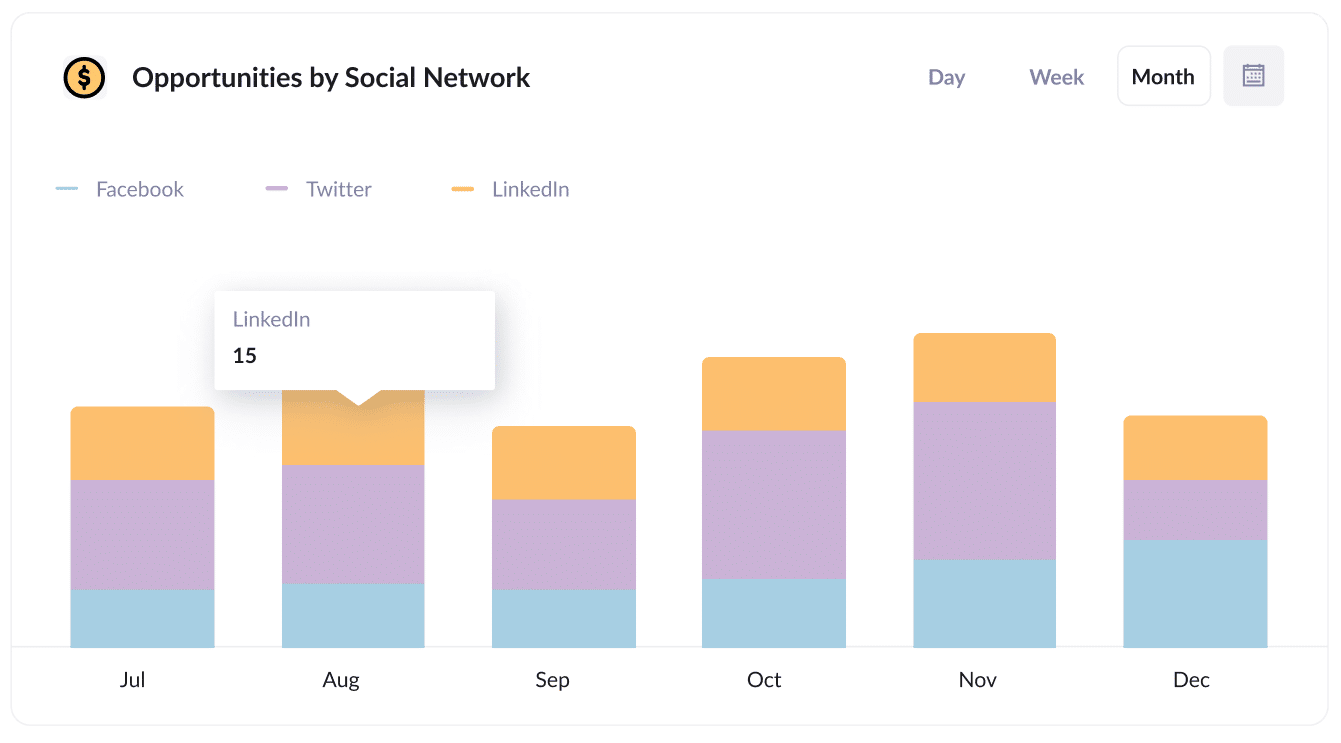
Running ads across multiple platforms means you want to understand how many customers you get from your ads on each network. The chart above helps you to better understand where to focus your budget to get the strongest results.
3. Customers by campaign
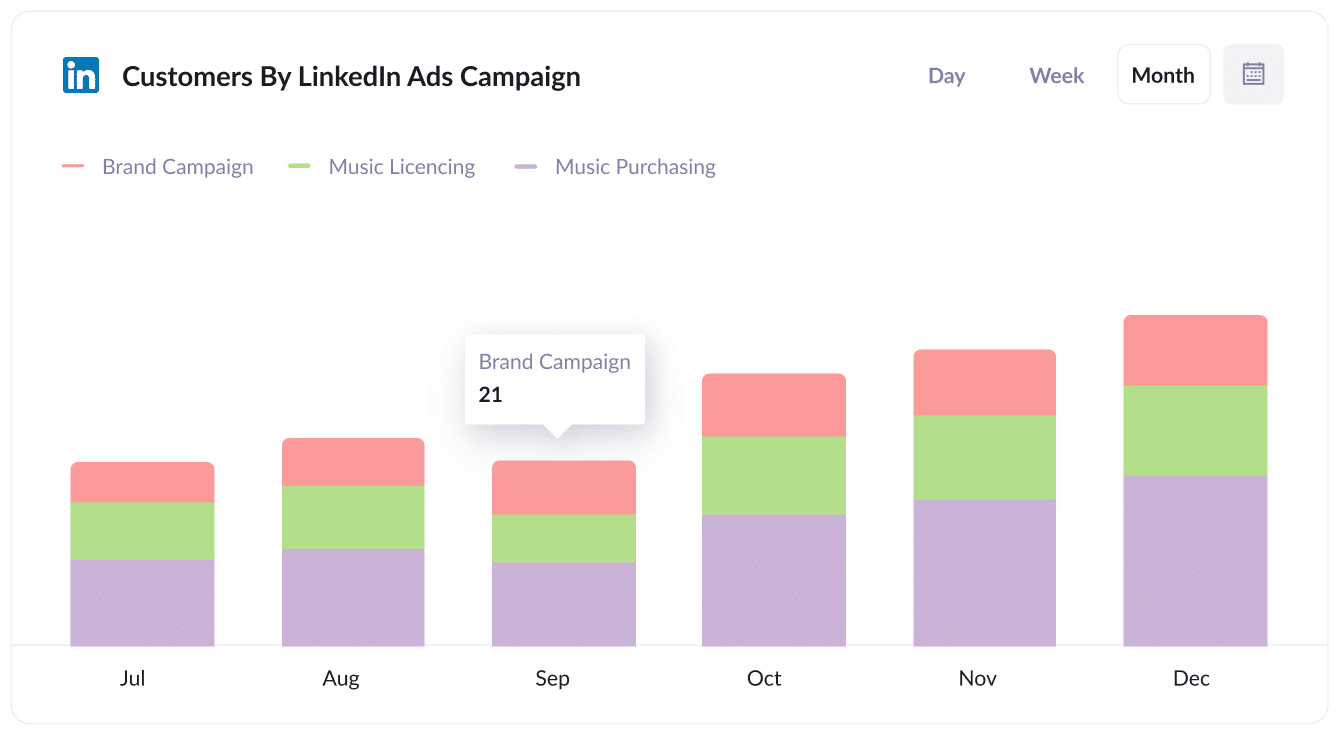
Breaking down which campaigns are delivering the most customers like in the chart above helps you to better understand which campaigns deliver customers to your business (as opposed to just bringing visitors or leads that don't convert).
4. Revenue by ad
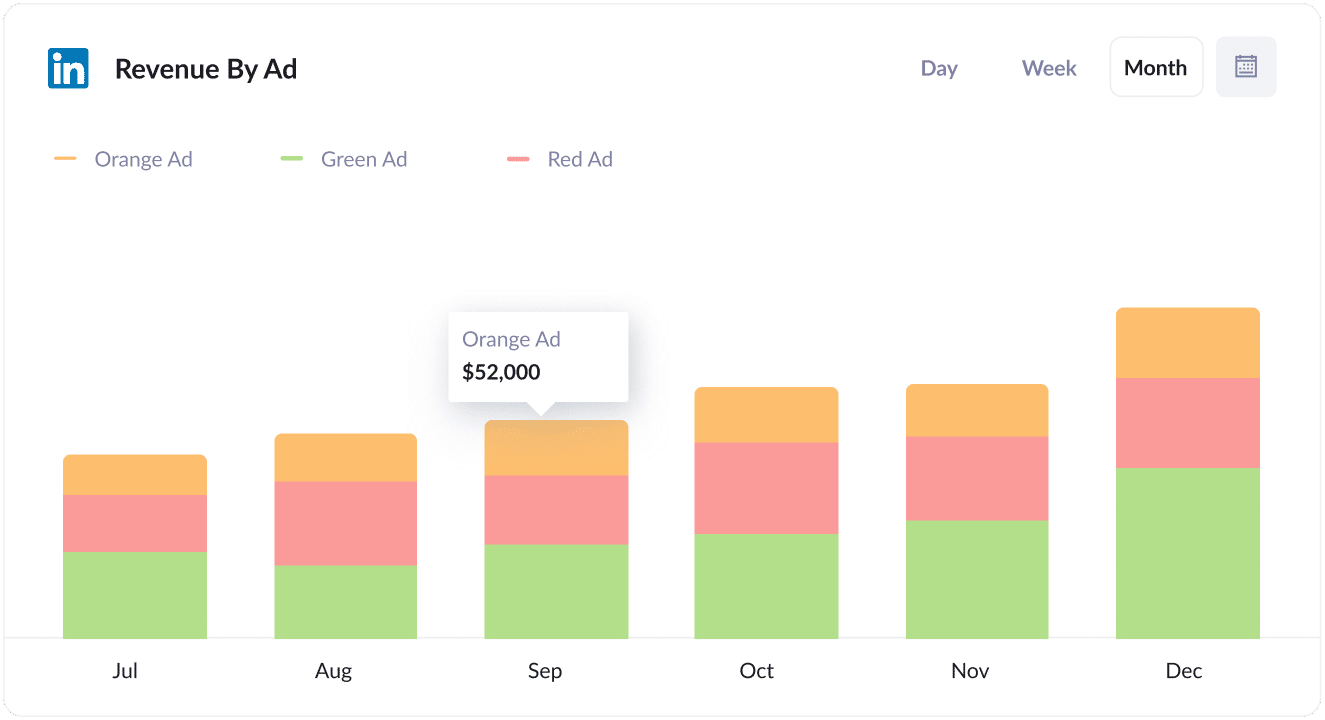
Breaking down revenue by ad like in the chart above shows you how much revenue is generated by each of the ads you are running on LinkedIn.
It helps you better understand which of your creatives are attracting the kind of leads that convert into customers, and can also help you improve your ad creative.
Wrap up
Tracking the number of leads and customers you receive from your LinkedIn Ads (and your other marketing activities) is what Attributer was built to do.
Attributer helps you to see the source of your leads, right down to the exact campaign, ad set, or ad they clicked. It also let's you see it in your existing tools (I.e. Freshsales) rather than having to learn a whole new environment.
Best of all, it's free to get started and only takes about 10 minutes to set up. So start a free 14-day trial of Attributer today to see how it can help you!
Get Started For Free
Start your 14-day free trial of Attributer today!

About the Author
Aaron Beashel is the founder of Attributer and has over 15 years of experience in marketing & analytics. He is a recognized expert in the subject and has written articles for leading websites such as Hubspot, Zapier, Search Engine Journal, Buffer, Unbounce & more. Learn more about Aaron here.
